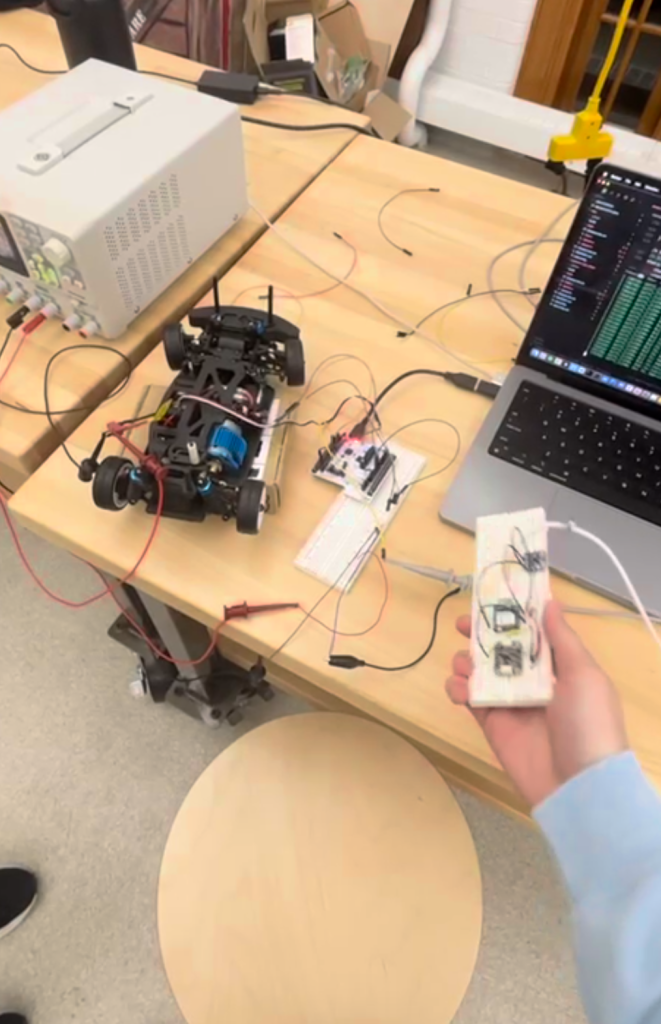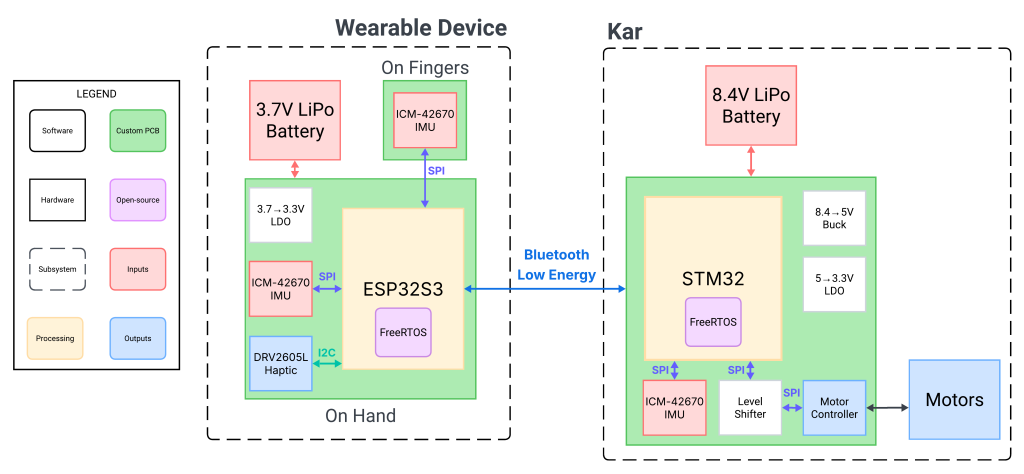Accomplished
Over the past two weeks, I worked with Enrique and Nick to fine-tune the driving and steering behaviors of our Kar. The first thing we worked on fine-tuning was the haptic feedback, where the haptic intensity is determined by the drive throttle. If the driver is accelerating at full throttle, they will feel considerable haptic feedback on the hand compared to if they only slightly accelerating.
We also worked on developing and fine-tuning user control, experimenting with driving with and without backwards, and the different hand motions/gestures that users could test with for feedback. I created our user feedback form and we have started receiving responses regarding the intuitiveness, haptic feedback, and overall performance of our system.
Progress / Schedule
Our team has finished MVP and are now focusing on fine-tuning and improving current controls based on the user feedback.
Deliverables / Next Steps
Before demo day on Monday:
- perform more user feedback tests.
- fine-tune Kar steering and acceleration control and haptic feedback.
- integrate user feedback into Kar and Kontroller.



